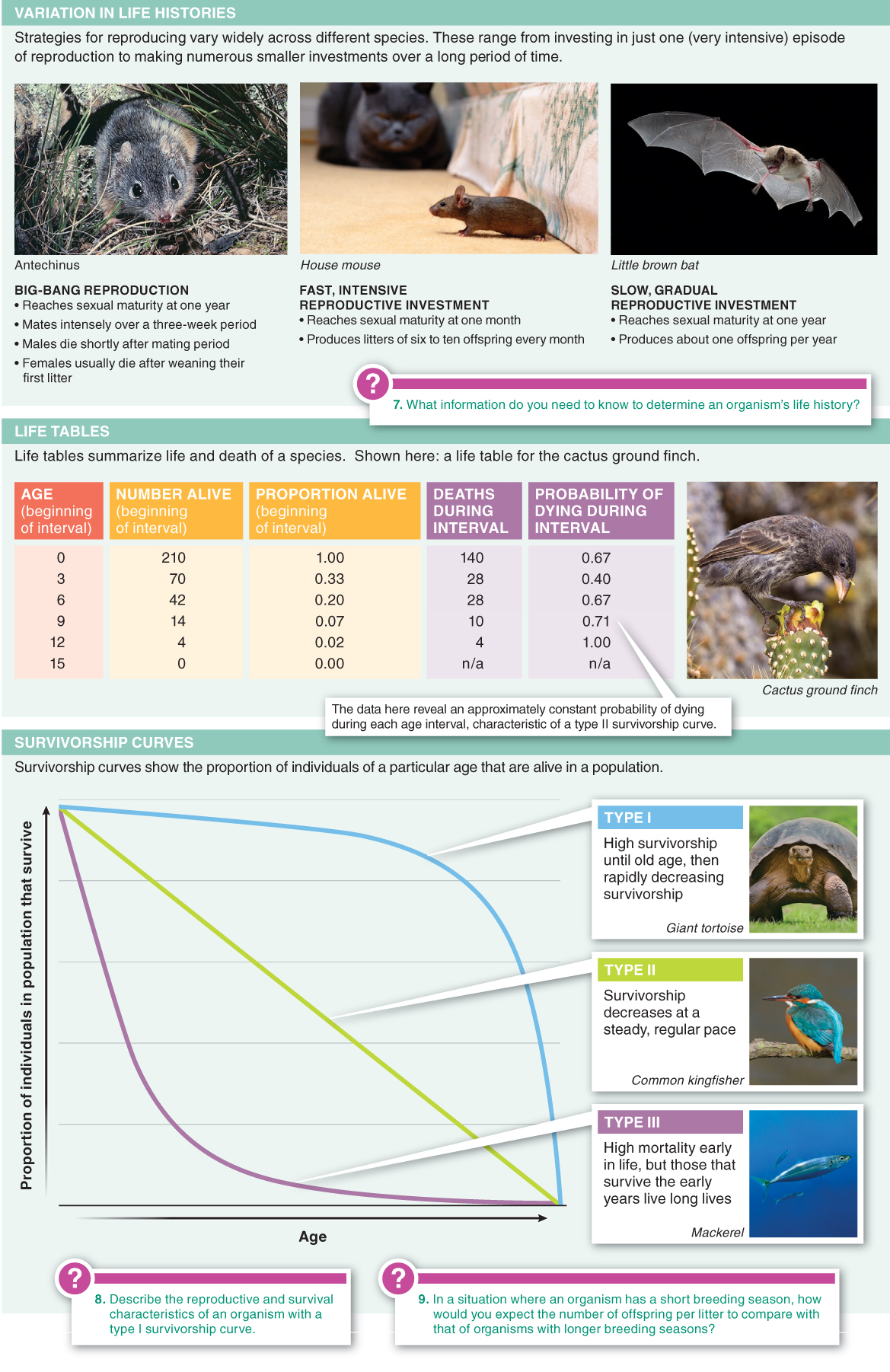14.7–14.10
14.7–A life history is like a species summary.
An organism’s pattern of investment in growth, reproduction, and survival is described by its life history.

Q
In a population, as N approaches K, the logistic growth equation predicts that:
- a) the carrying capacity of the environment will increase.
- b) the growth rate will approach zero.
- c) the population will become monophyletic.
- d) the population size will increase exponentially.
- e) the growth rate will not change.

The number of individuals that can be supported in a given habitat is:
- a) the innate capacity for increase.
- b) one-
half of the maximum sustainable yield. - c) a density-
independent effect. - d) generally increasing over time.
- e) the carrying capacity.

Which of the following statements about maximum sustainable yield is incorrect?
- a) The maximum sustainable yield for a population is the population’s growth rate at K/2.
- b) The maximum sustainable yield for a population can be difficult to determine because it is not always possible to accurately measure N.
- c) The maximum sustainable yield for a population can be difficult to determine because it is not always possible to accurately measure K.
- d) The maximum sustainable yield for a population is a useful management guideline for harvesting plant products such as timber, but is not helpful for managing animal populations.
- e) The concept of maximum sustainable yield can generate useful information for fighting the growth of pest species.

Dr. David Reznick has studied the evolution of life history in guppies that live in streams in Trinidad. Guppies are found in two different types of habitat: sites where predation is high and sites where predation is low. Which of the following life history characteristics would you expect to evolve in a guppy population living in a high predation site?
- a) bright colors and courtship displays
- b) increased egg number
- c) a female-
biased sex ratio - d) increased egg size
- e) delayed sexual maturation

606